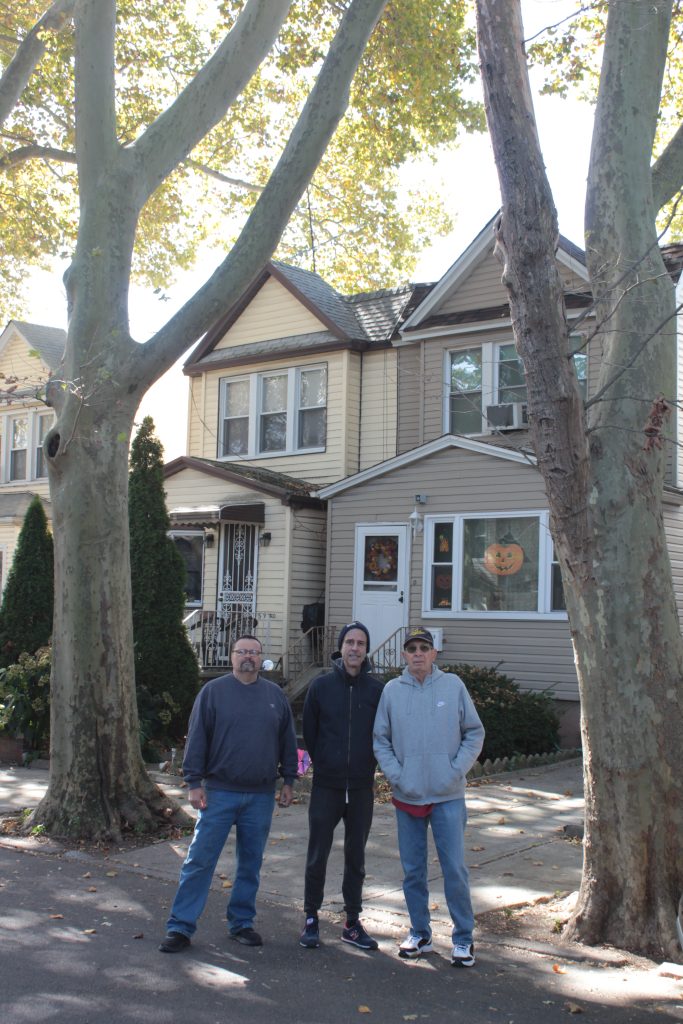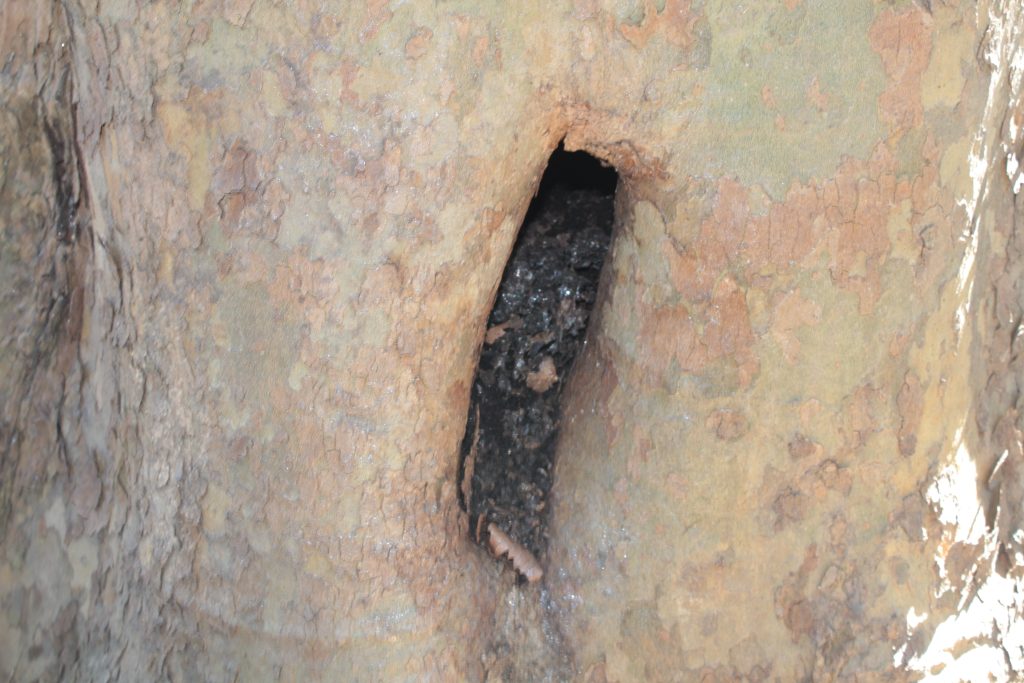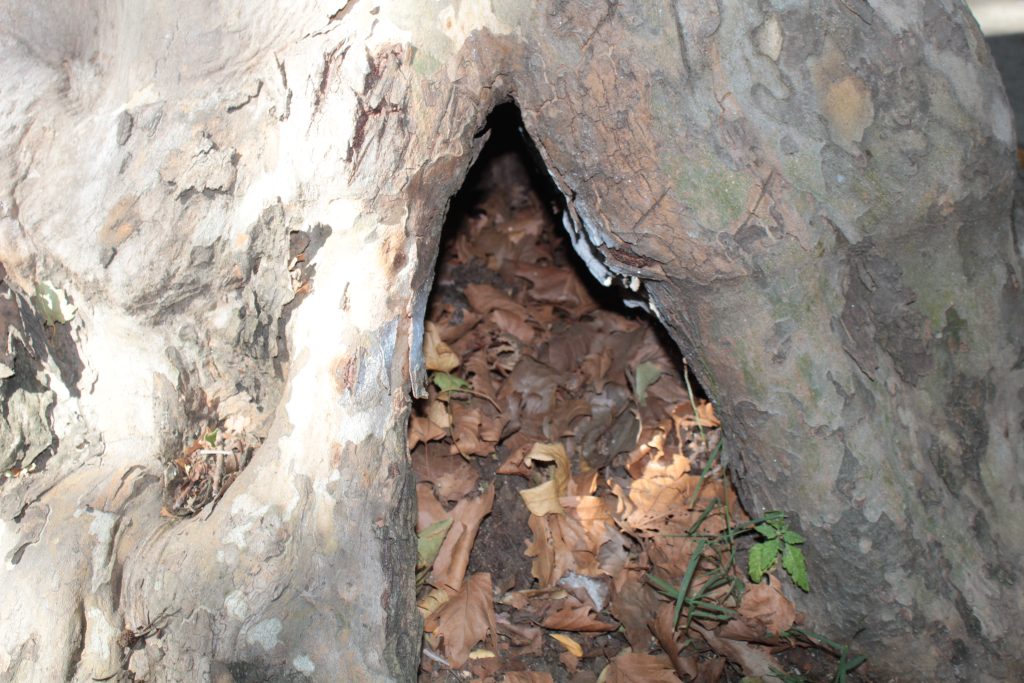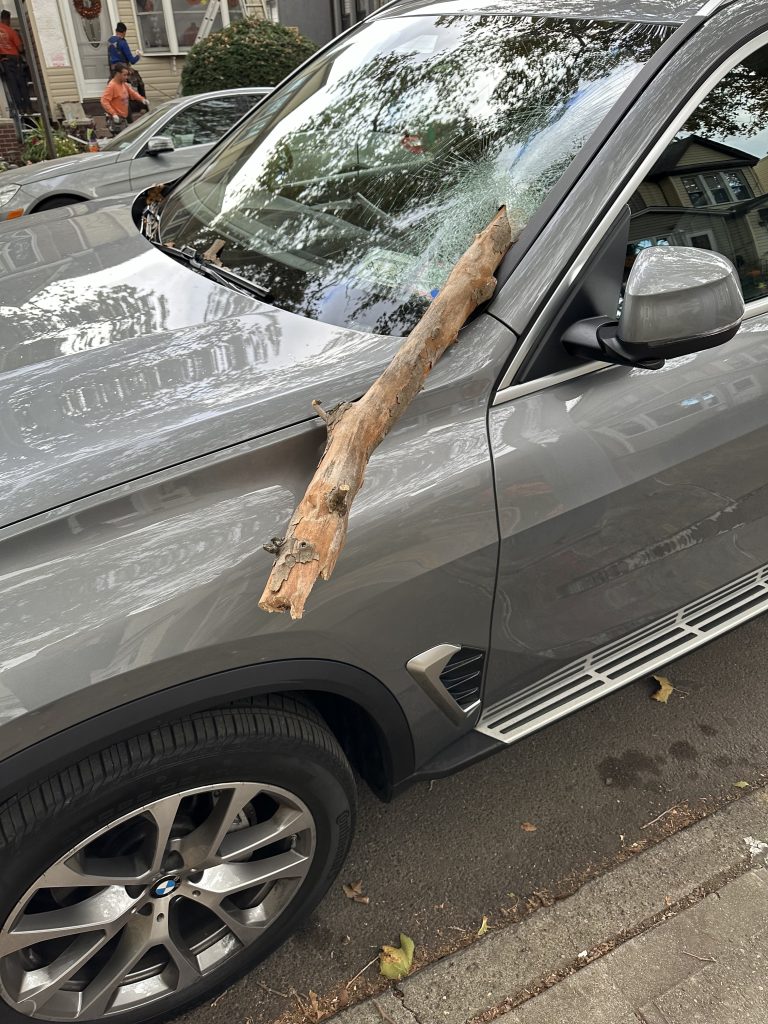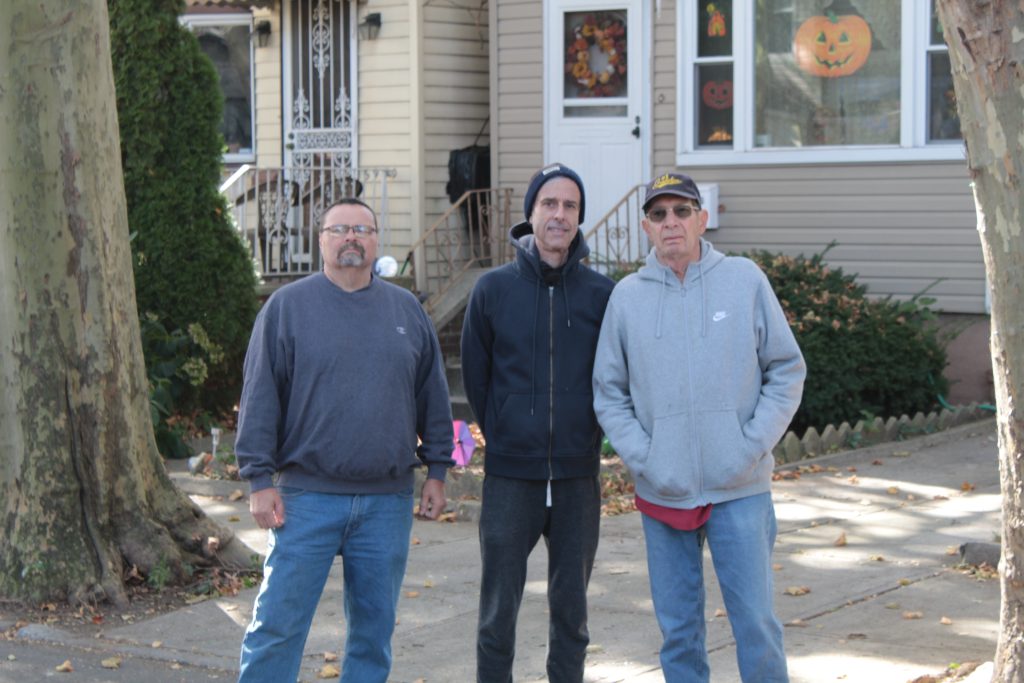
Residents of 66th Place in Glendale are alarmed by neglected city-owned trees that pose safety risks and have caused property damage.
By MOHAMED FARGHALY
mfarghaly@queensledger.com
A growing sense of distress among residents on 66th Place is reaching a boiling point as they grapple with hazardous conditions caused by neglected city-owned trees. The issue, led by concerned neighbor Douglas Weiss and his neighbors, has resulted in property damage and safety concerns, with residents calling for immediate intervention from the New York City Parks Department.
During a discussion among neighbors about the ongoing issues with city-owned trees, frustration centered around the inadequate management of the Parks Department. John Schweickert, a long-time resident of the block, expressed frustration over the lack of maintenance, noting that the last significant tree trimming occurred nearly eight years ago.
“Over the last two years, we’ve had many branches fall and come down,” he said, recounting incidents where tree limbs nearly struck pedestrians and damaged vehicles. “This is something that could happen anytime, anywhere on the street.”
The community has reported multiple incidents of fallen branches causing severe damage to homes and vehicles, with one resident’s car totaled after being struck by a large limb.
“It’s not just an inconvenience; it’s dangerous,” Schweickert said. “Last year, a branch almost hit the mailman crossing the street, and then one went into my neighbor’s roof.”
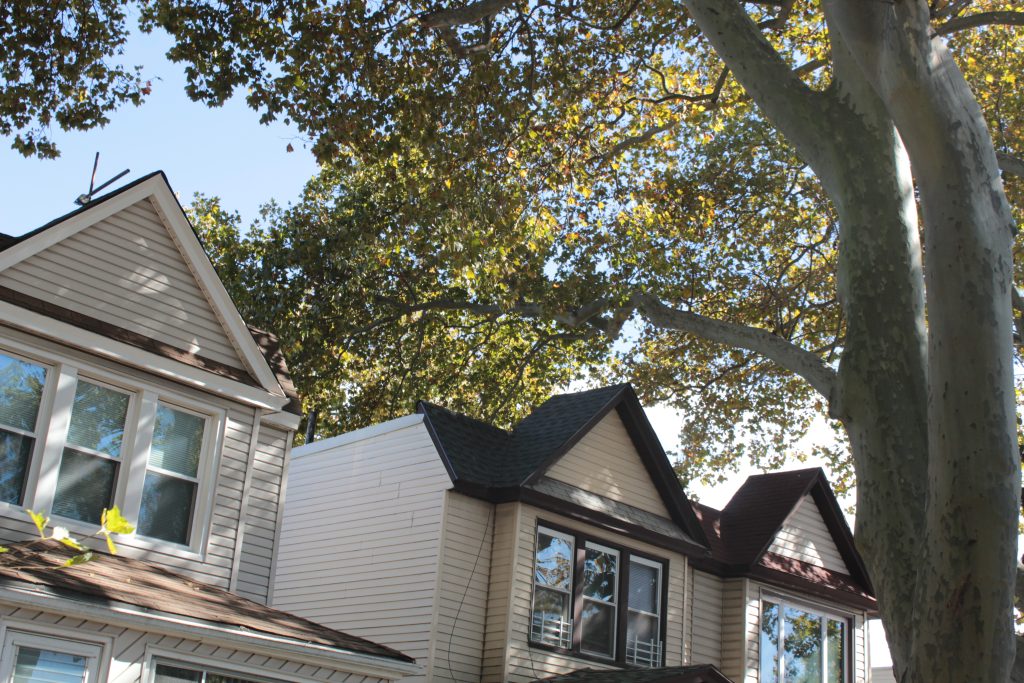
Frustrated with the Parks Department’s lack of action, they are urgently seeking intervention.
Neighbor Terri Vazquez recounted a troubling experience when a branch from a city tree crashed onto her property during a rainstorm. While watching TV, she heard a loud crash and discovered the branch had fallen onto the outside of her house, narrowly missing the ceiling. The fallen branch caused damage to her brother’s house and the gate, prompting police to tape off the area for safety.
Terri reflected on a previous incident where a gigantic dead branch—a clear symptom of what was to come—almost struck a mailman. This very same tree, which had active service requests on it, ultimately fell completely, causing significant damage. The sequence of events was alarming: first, a massive dead branch nearly killed the mailman, and then the entire tree came crashing down. If the Parks Department had addressed the issue sooner, she believes the recent damage could have been avoided.
After the incident, Terri faced delays with insurance adjusters who needed to assess the damage, complicating the repair process.
Ultimately, Terri emphasized the need for a more proactive approach from the Parks Department. She understands their staffing challenges but insists that earlier intervention could prevent future incidents and ensure the safety of residents.
The current system creates a cycle of insurance claims that not only affects individual homeowners and car owners but also raises insurance premiums for the entire community. When a resident’s car is totaled by falling branches, the resulting insurance claim is substantial, putting further financial strain on the system. This scenario reflects the broader issue where repeated claims linked to city tree damage drive up costs for everyone in the area.
Moreover, the lengthy process of submitting claims to the NYC Comptroller exacerbates the situation. Homeowners can’t afford to wait for reimbursements while managing immediate repair needs, forcing them to rely on their insurance for quick fixes. This reliance leads to additional claims, perpetuating the cycle of increased premiums and financial strain across the community. The residents are frustrated by this “robbing Peter to pay Paul” scenario, as they seek urgent action to address the tree hazards instead of navigating a complex and burdensome claims process.

Despite their advocacy, they feel unheard and demand better tree management to ensure safety.
Despite repeated requests for action through the city’s 311 service, residents have seen little improvement.
“They come, take a look, and say there’s really no danger,” Schweickert said, only for more branches to fall later.
Residents have expressed frustration with the tree maintenance process in NYC, noting a systemic issue where, despite the city’s investment in training and certifying arborists, their pay is significantly lower than in the private sector, leading to high turnover as they are hired away by private companies. The process for addressing tree concerns begins with filing a complaint through the 311 system, which assigns a Service Request ID that is forwarded to the Parks Department. There, a certified arborist assesses the situation and assigns a priority grade from A to D, with A being the highest. However, the criteria for prioritizing work orders on any given day remain unclear to residents.
The residents understand the Parks Department’s staffing challenges, attributing the neglect to budget constraints. However, they feel a sense of urgency for a solution. “The ultimate solution would be for the city to come down, inspect the street, and take care of the dangerous trees,” Schweicker said.
Weiss, who has spearheaded efforts to address the issue, echoed these sentiments.
“We’ve been asking for years for the Parks Department to do their job, but it seems to fall on deaf ears,” Weiss said. “We just want to feel safe in our own neighborhood.”
The group lamented the lack of effective management compared to past administrations, particularly under former Mayor Bloomberg, who actively monitored service requests. They pointed out that current staffing levels in the Parks Department are alarmingly low, with only a fraction of the required climbers and pruners available to address the backlog of work orders.
Residents recounted dangerous incidents involving falling branches, including one that nearly hit a mailman and another that caused significant damage to a neighbor’s home. They criticized the Parks Department for failing to respond promptly to prior warnings about unstable trees, suggesting that a more proactive approach could prevent future incidents.
During a walkthrough of their block, Weiss and neighbors highlighted the alarming condition of city-owned trees, focusing on several indicators of decay, such as hollowed trunks. Hollowed trunks occur when the inner wood of a tree decays, often due to disease, pests, or environmental factors. This deterioration compromises the tree’s structural integrity, making it more susceptible to falling or breaking during storms or high winds.
Weiss emphasized the significant danger posed by the gigantic overhanging branches that have grown alarmingly close to homes, creating substantial risks. Unlike another block where blue sky is visible between the tree canopy and the houses, their block lacks that space; the limbs are literally hanging over the homes, raising serious safety concerns.
As they compared their street to others, it became clear that some areas were much better maintained, with fewer overhanging branches. Weiss argued that the Parks Department should adopt a more efficient approach, addressing the most problematic trees first rather than reacting only after incidents occur. He noted the need for a thorough evaluation of each block to prioritize safety.
The tree concerning Weiss and several of his neighbors has been dubbed the “widowmaker” due to its dangerous condition and proximity to homes, with a hollowing trunk indicating a severe risk. This situation mirrors Terri’s house accident, as residents have submitted photos of the widow maker to the Parks Department, and an arborist has also documented its state. While the trainees who visited were eager and the foreman expressed sympathy, they lacked the authority to take action outside of their assigned tasks.
Despite the community’s ongoing advocacy, including appearances at meetings, they expressed frustration that the department often fails to act on service requests or to recognize immediate dangers. Weiss stressed that while they appreciate the presence of trees, it’s critical to maintain healthy ones and address the unhealthy ones before they pose a life-threatening risk, especially to children and residents in the area.
He pointed out that tree maintenance is often sidelined in favor of new plantings, which receive more public attention and funding. Ultimately, the neighbors hope their efforts will inspire others to advocate for better tree management and safety in their own communities.
The overarching sentiment was a call for better budget allocation and management practices to ensure trees are properly maintained, emphasizing that while they value the presence of trees in their community, safety must come first. The group concluded that increased funding and a focus on maintenance could significantly improve the situation.
As the community continues to advocate for action, they hope to raise awareness of the dangers posed by these neglected trees and prompt the city to prioritize their safety. With the stakes high and frustration mounting, the residents of 66th Place remain determined to seek the support they need to protect their homes and their lives.
